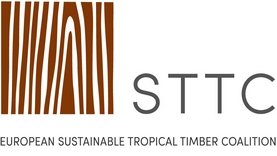Fair&Precious reflects on achievements and future
Fair&Precious is holding a special event to mark its achievements over its first three years and to discuss the work it still has to do to grow the market for certified sustainable tropical timber. The celebration takes place on November 4 at the ATIBT’s base in the Pavilion Indochina in the Paris Tropical Gardens.
It will follow on from the third ATIBT Think Tank on November 2 and 3, which will look at latest developments and future prospects in certification in the Congo Basin, with input from representatives of supplier countries. The ATIBT is expecting an audience of 50 to 60, with some delegates taking part remotely.
According to ATIBT General Manager Benoît Jobbé-Duval, Fair&Precious (F&P) has already made significant progress in raising awareness of the value of using certified tropical timber and the importance of a viable market for it in supporting sustainable, socially responsible forest management. “Fair&Precious has generated numerous articles for European media and built a presence in social networks,” he said. “We have also developed our joint co-operative strategy with the Sustainable Tropical Timber Coalition, which is important for us, and received numerous testimonials from certified companies.”
There is still progress to be made, he added. “Above all, we would like the F&P brand to really boost the consumption of certified tropical wood in Europe, in a verifiable and objective manner,” he said. “Supported by other sources of information, we want it to convey the benefits of tropical timber certification to European processors and consumers.”
The celebration will link with the content of the ATIBT Think Tank. Its themes will include exploring new markets for tropical timber, the latter’s image, restoring value to rainforests and supporting certification and environmental services to enhance the work of certified concessions. It will also focus on collaboration with Asian stakeholders to increase uptake of sustainable tropical forest management.
For more information: info@atibt.org
Or go to the Fair&Precious website



